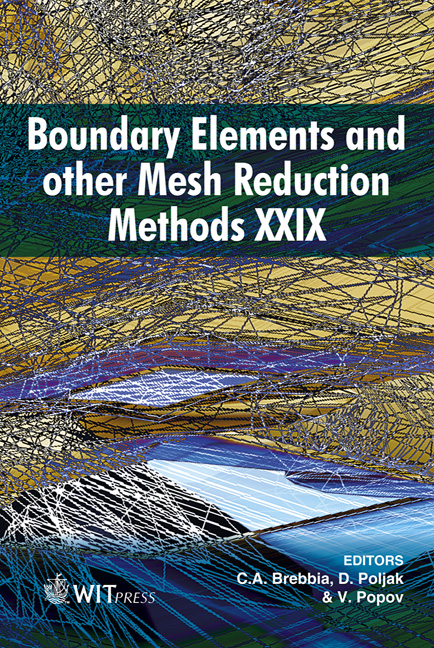A Method For Obtaining A Sparse Matrix From The Volume Integral Equation For Elastic Wave Propagation
Price
Free (open access)
Transaction
Volume
44
Pages
10
Published
2007
Size
1,686 kb
Paper DOI
10.2495/BE070241
Copyright
WIT Press
Author(s)
T. Touhei
Abstract
The advantage of the volume integral equation is that it is possible to clarify the relationship between fluctuations of the wave field and radiation of scattered waves. This paper proposes a method to obtain a sparse matrix for the volume integral equation for elastic wave propagation. The formulation employed here is based on the wavenumber domain solution together with usage of Haar scaling functions. The unitarity of the Fourier transform in terms of the Haar scaling function reveals that the integral equation is transformed into a linear algebraic equation with a sparse matrix. Numerical calculations are carried out to verify the proposed formulation. Keywords: elastic waves, volume integral equation, sparse matrix, unitary transform, Haar scaling function. 1 Introduction Since 1980s, the boundary element technique has been recognized as an efficient tool for the analysis of wave propagation (for example, Brebbia and Walker [3]). On the other hand, the volume integral equation methods have not been used very often except for some cases (for example, Kitahara et al [5]). The advantage of the volume integral equation such as the Lippmann–Schwinger equation (Colton and Kress [4]) is in that it clarifies the relationship between the fluctuation of the medium and the radiation of scattered waves. Standard technique for discretizing the equation, however, leads to a large and dense matrix for the volume integral equation, that makes sometimes numerical analysis impossible even by recent high performance computers.
Keywords
elastic waves, volume integral equation, sparse matrix, unitary transform, Haar scaling function.





